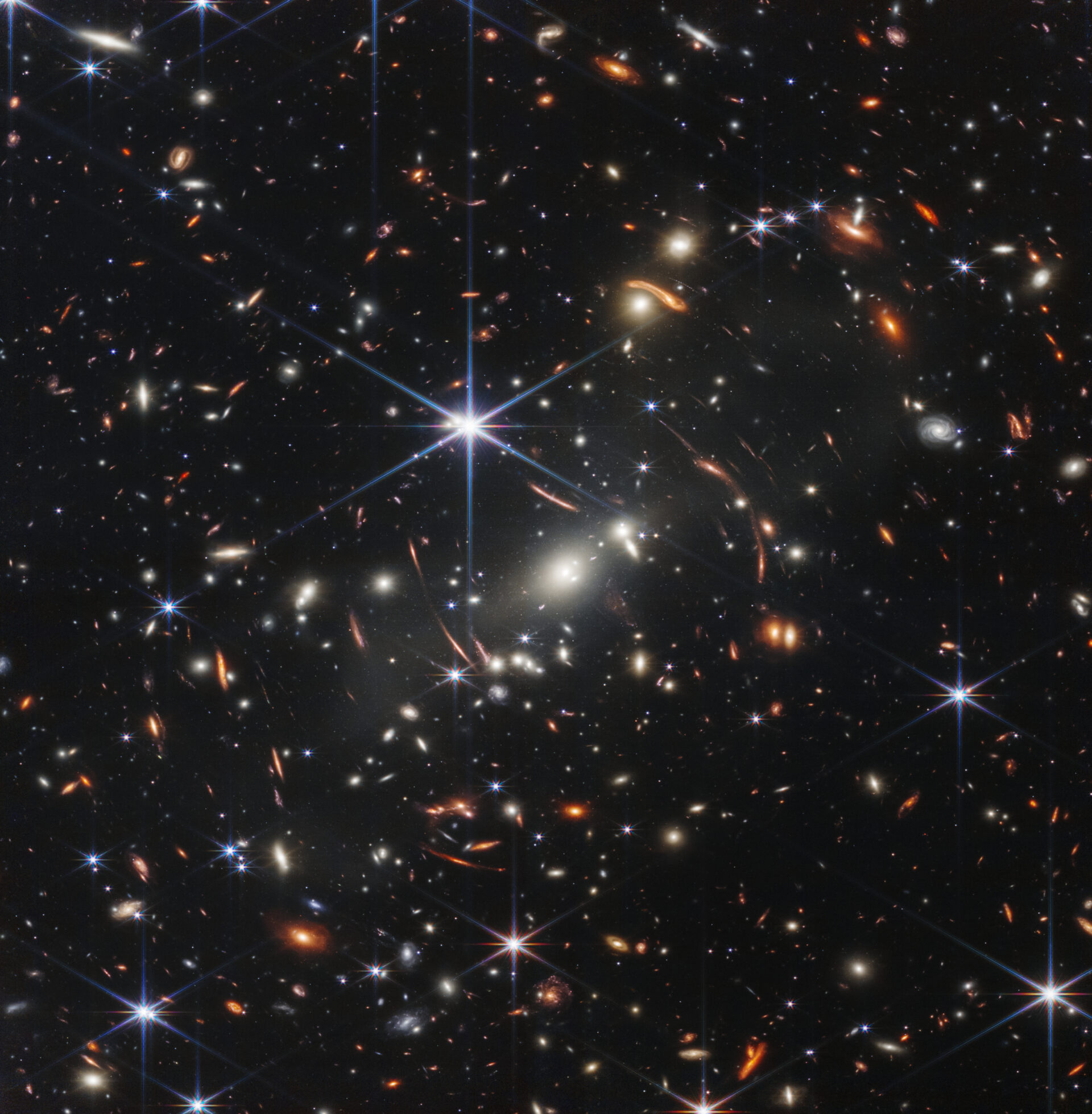The very first photograph taken by NASA’s newest James Webb Space Telescope contained a hidden treasure. The Deep Field Webb photo shows a brilliant distant galaxy, disfigured by gravitational lensing and surrounded by dense clusters. As it turned out, this galaxy contains some of the first stars of the universe.

The galaxy is located at a distance of 9 billion light-years from Earth and is called the Sparkler Galaxy, because the compact objects surrounding it look like small shiny yellow-red dots. The galaxy is of special scientific interest because it is surrounded by the oldest objects in the universe. Exploring 12 compact objects surrounding the galaxy, the Canadian team of the NIRISS Unbiased Cluster Survey (CANUCS) finds that five of them are indeed spherical clusters. In addition, they may be some of the oldest globular clusters ever seen, possibly dating back to the time when stars first began to be born in the universe.

“We found that most of the objects of the main body of the galaxy are really very massive and very old star systems,” said Kartheik G. Iyer, an astronomer at the University of Toronto in Canada.
Comparison with the Milky Way
The Milky Way contains approximately 150 globular clusters. But it is difficult for scientists to determine their age. The scientist explained that it is relatively easy to determine the age of most objects in our galaxy, but this does not apply to clusters. It is much easier to determine the date of more distant clusters, such as the Sparkler Galaxy, which astronomers see as it was 9 billion years ago, when the surrounding clusters were also much younger, and the Universe itself is only 4.5 billion years old. Therefore, the definition of their age is akin to the image of a baby, not a middle-aged person.
Therefore, using data from the Canadian instrument NIRISS (Near-Infrared Imager and Slitless Spectrograph) on board James Webb, astronomers were able to confirm the age of the clusters. NIRISS observations revealed no signs of oxygen, usually associated with young clusters in which stars are actively forming.
The discovery of such distant globular clusters in the first image of Deep Field Webb by James Webb is an example of how the telescope continues to make impressive discoveries and form the future of astronomy. It was previously impossible to use such remote globular clusters to date the first stars in distant early galaxies before the appearance of James Webb.
Earlier we talked about how a failure occurred on James Webb.
According to Space
Follow us on Twitter to get the most interesting space news in time
https://twitter.com/ust_magazine

